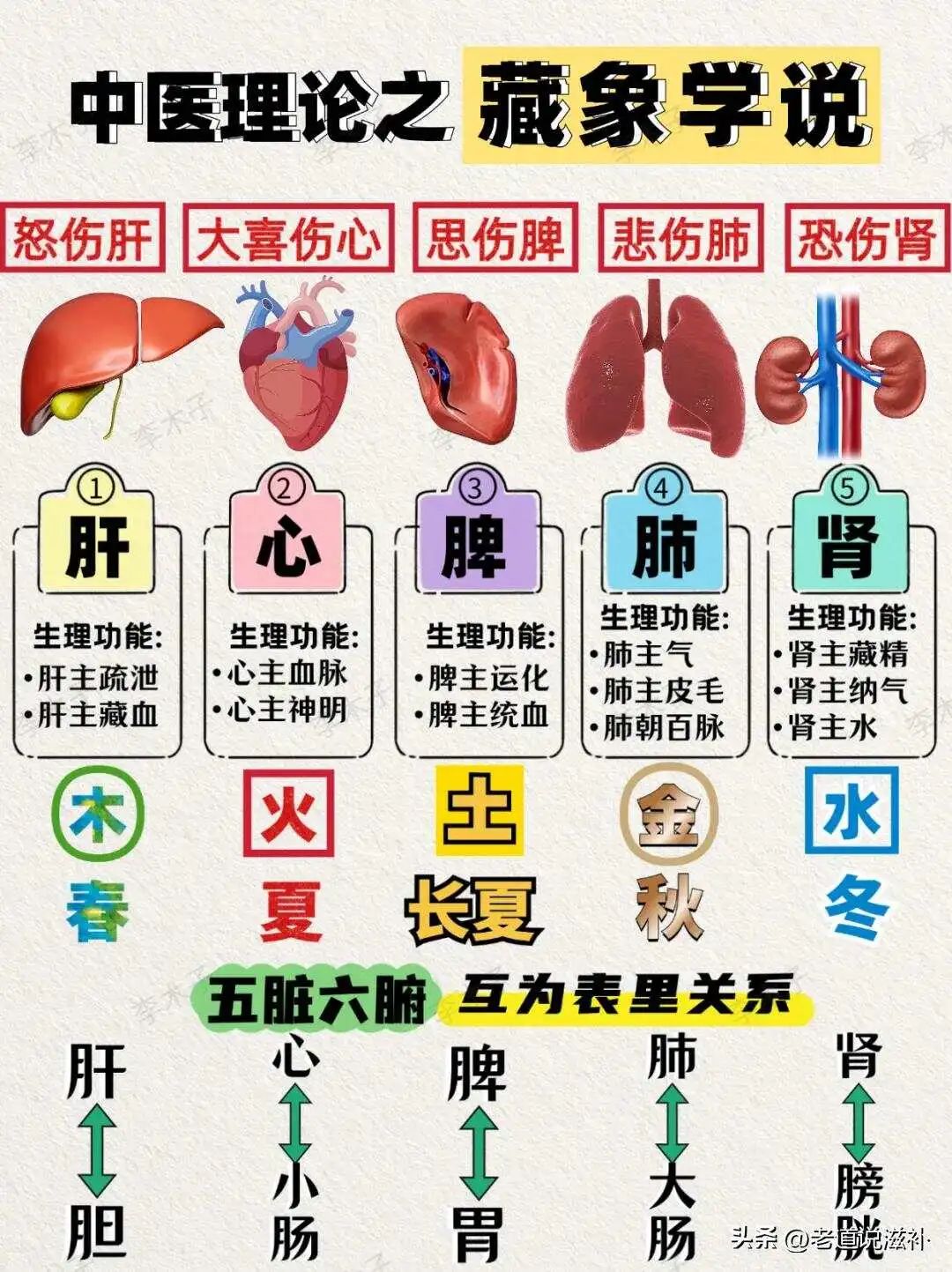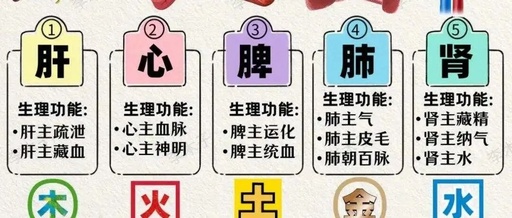The concept of the Five Zang and Six Fu in Traditional Chinese Medicine (TCM) has a long-standing origin, primarily encompassing the following aspects:
Anatomical Basis:
The theory of the Five Zang and Six Fu in TCM has certain anatomical foundations. Ancient physicians, through observation and dissection of the human body, understood the existence and basic morphology of substantial organs such as the heart (xin), liver (gan), spleen (pi), lungs (fei), and kidneys (shen), as well as the hollow organs like the gallbladder (dan), stomach (wei), large intestine (da chang), small intestine (xiao chang), bladder (pang guang), and the San Jiao (三焦, Triple Burner). For instance, the “Ling Shu – Jing Shui” mentions, “As for the eight-foot man, the skin and flesh are measurable externally, and upon death, dissection can reveal the internal organs,” indicating that there was already a practice of dissecting the human body to understand the Zang and Fu.
Summary of Long-term Medical Practice:
Through long-term medical practice, ancient physicians observed the close connections and interactions between various organs in the human body, which are closely related to physiological functions and pathological changes. Through repeated observation, analysis, and summarization of these phenomena, the theoretical system of the Five Zang and Six Fu gradually formed. For example, it was discovered that the heart is related to blood circulation; when the heart Qi is abundant, the complexion is rosy, and the pulse is soft and strong. The liver is associated with emotions, blood storage, and regulation; when liver Qi is stagnant, it can lead to emotional depression and chest or rib pain.

The Five Zang and Six Fu in TCM and their functions
Influence of Philosophical Thought:
Ancient Chinese philosophical thoughts, such as the theories of Yin-Yang and the Five Elements, have profoundly influenced the formation and development of the theory of the Five Zang and Six Fu. The Yin-Yang theory categorizes the organs into Yin and Yang, with the Five Zang belonging to Yin and the Six Fu to Yang, to illustrate their different functions and characteristics. The Five Elements theory assigns each of the Five Zang to one of the Five Elements: the heart (xin) belongs to fire (huo), the liver (gan) to wood (mu), the spleen (pi) to earth (tu), the lungs (fei) to metal (jin), and the kidneys (shen) to water (shui). This relationship of generation and restriction among the Five Elements explains the interconnections and constraints among the Five Zang, constructing a more complete theoretical framework that enhances the systematic and logical nature of the theory of the Five Zang and Six Fu.
The concept of the Five Zang and Six Fu can be traced back to the “Lüshi Chunqiu – Da Yu” which states, “There are 360 joints, nine orifices, and the Five Zang and Six Fu in a person.” With the continuous development and refinement of TCM theory, classical texts such as the “Huangdi Neijing” further elaborated on the physiological functions, pathological changes, and interrelationships of the Five Zang and Six Fu, laying a solid foundation for the development of TCM organ theory in later generations.

